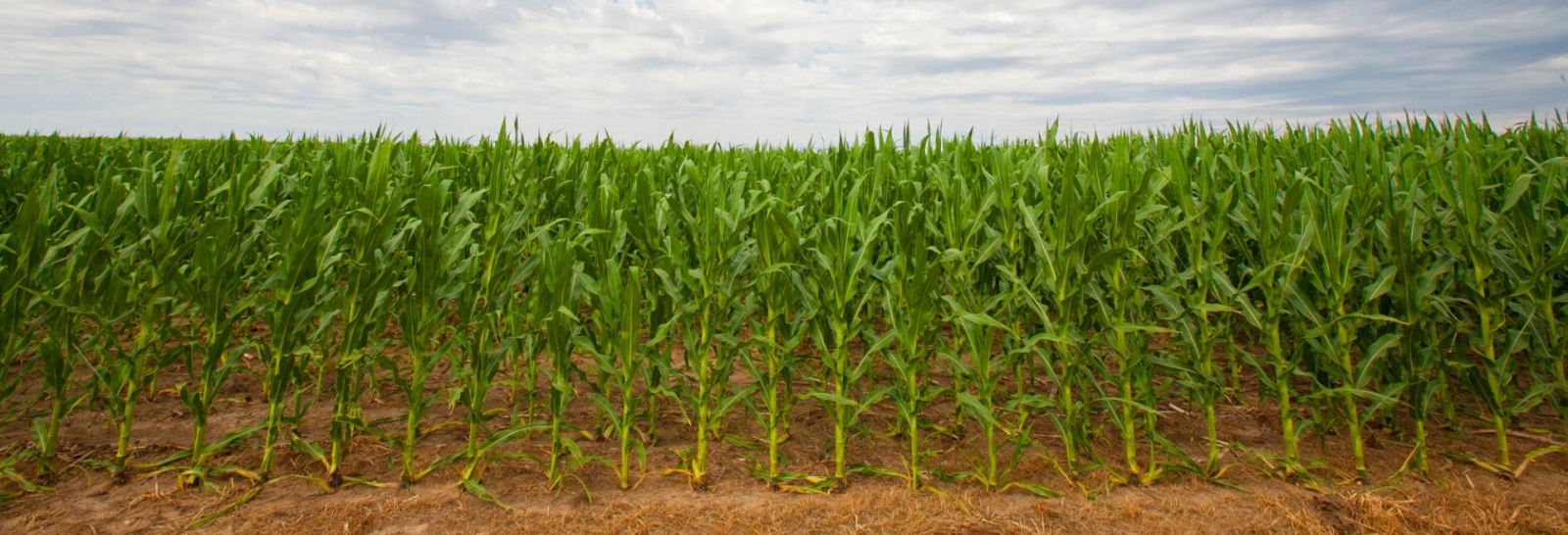July 10, 2009
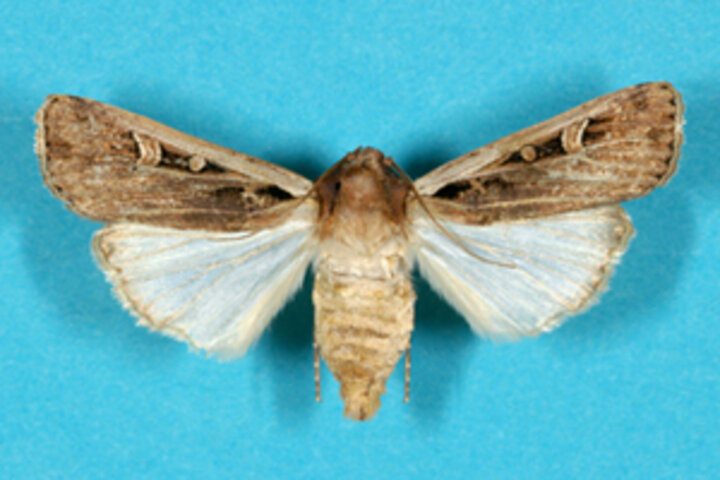
|
| Western bean cutworm moth |
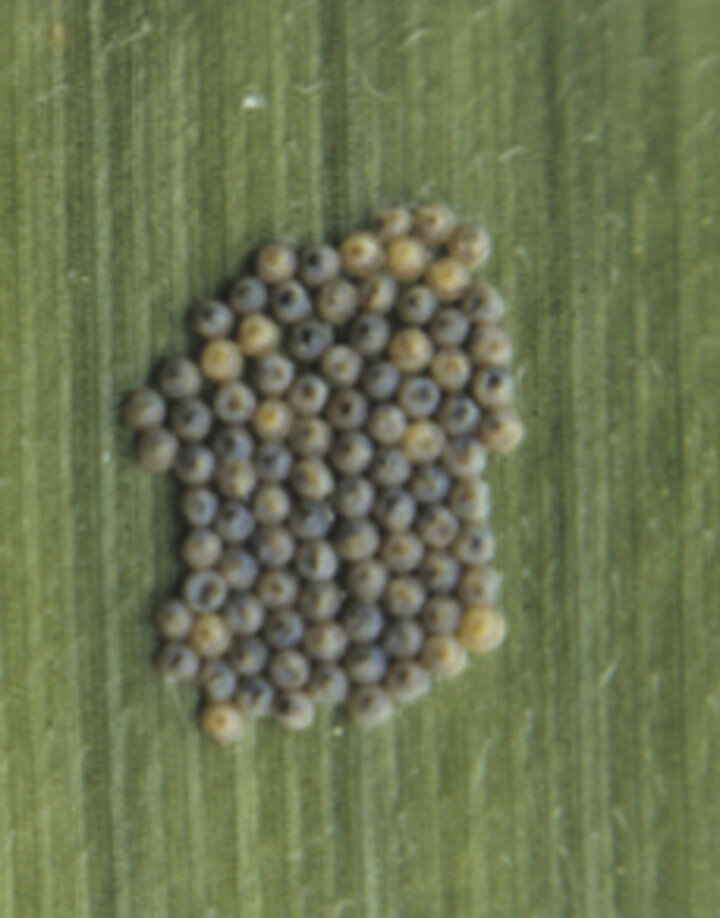
|
| Western bean cutworm eggs immediately prior to hatch. |
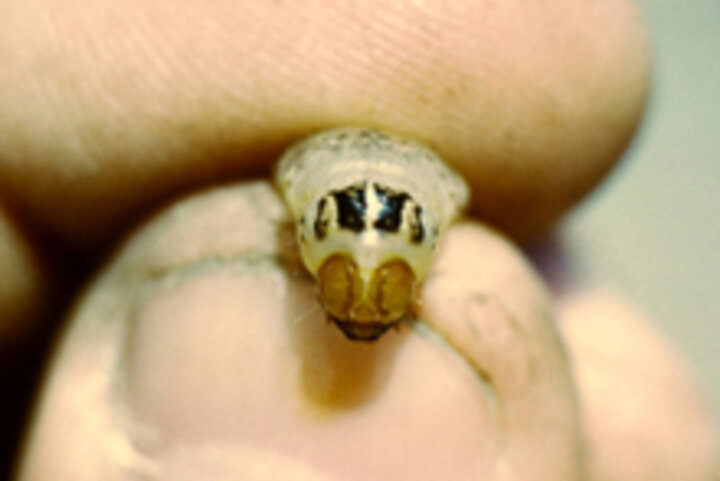
|
| Larva with stripes on prothorax. |
|
Western bean cutworm moths are beginning to emerge. As moth numbers increase, mating will begin and females will begin laying eggs on corn. The appearance of the first moths provides a signal that farmers and crop consultants should begin to scout fields for the white, dome-shaped eggs.
Western Bean Cutworm Life Cycle
Western bean cutworm moths lay eggs in clusters of five to 200 on the top surface of the upper most leaf of a corn plant and on any leaf surface of dry beans. The eggs require five to seven days to develop, during which time the egg color changes to tan and then to purple immediately before they hatch.
Scouting
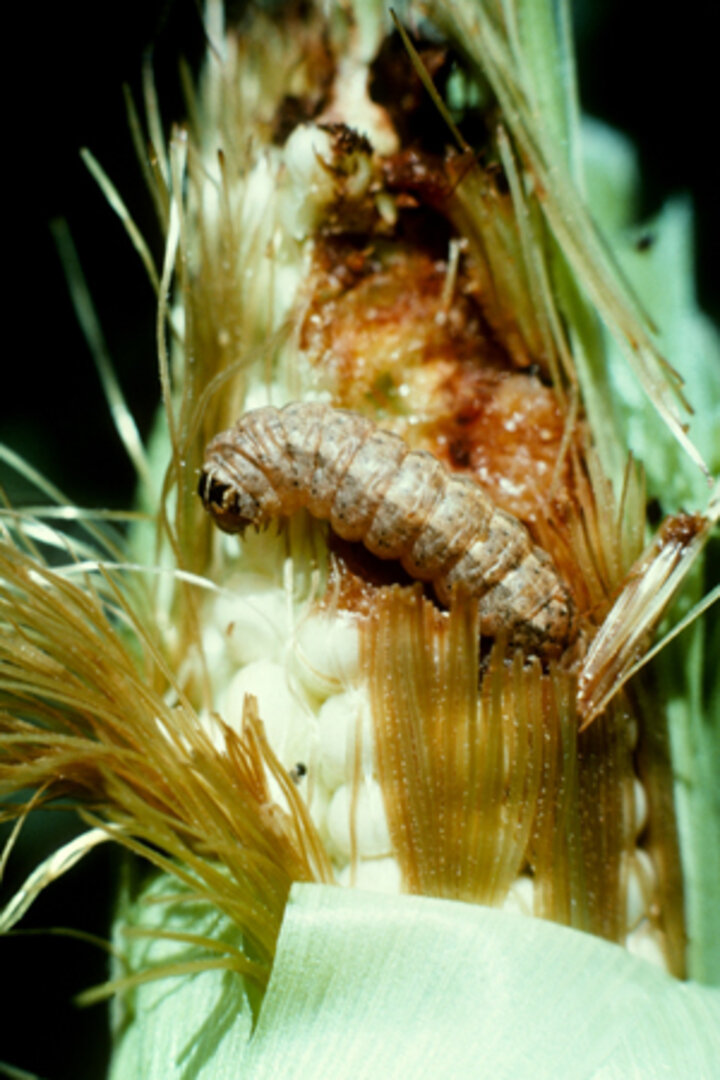
|
| Larger western bean cutworm larvae on a corn ear tip. |
Scouting for western bean cutworm should begin in field corn when the first moths are caught. Control decisions should be made shortly after the moth flight peaks. The moth flight usually peaks in early-mid July. When scouting for western bean cutworms in corn, check 20 plants in at least five areas of each field. Look for eggs on the top surface of the upper most leaf or look for larvae in the tassel. If 8% of field corn plants, 5% of seed corn plants or 5% of popcorn plants have egg masses or larvae, consider applying an insecticide. Herculex hybrids appear to control the larvae very well, although not perfectly, and should not need treating.
Western bean cutworm moths prefer to lay eggs in corn plants that are in the late whorl stage compared to those that have completely tasseled. Pay particular attention to later planted fields or those with uneven development. Western bean cutworm eggs that hatch when corn plants are in the whorl stage of growth have a high rate of survival. The larvae are well protected in the whorl or tassel.
Treatment Recommendations
If an insecticide treatment is warranted in corn, it should be made when 95% of the plants in a field have tasseled. This timing of the application increases the chance that the worms will be exposed to the insecticide resulting in better control.
Chemigation has provided very good control of this insect, even at lowest labeled rates. Asana, Ambush, Baythroid, Pounce, Lorsban, Capture, Mustang, Penncap-M, Proaxis, Warrior, and Seven are all labeled for control of western bean cutworm. Many generics also will give good control. A list of registered insecticides, rates, preharvest intervals, and grazing restrictions is on the UNL Department of Entomology Web site for western bean cutworms.
Keith Jarvi
Extension Educator
Bob Wright
Extension Entomologist
